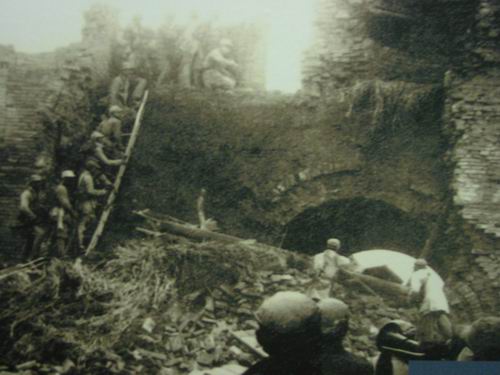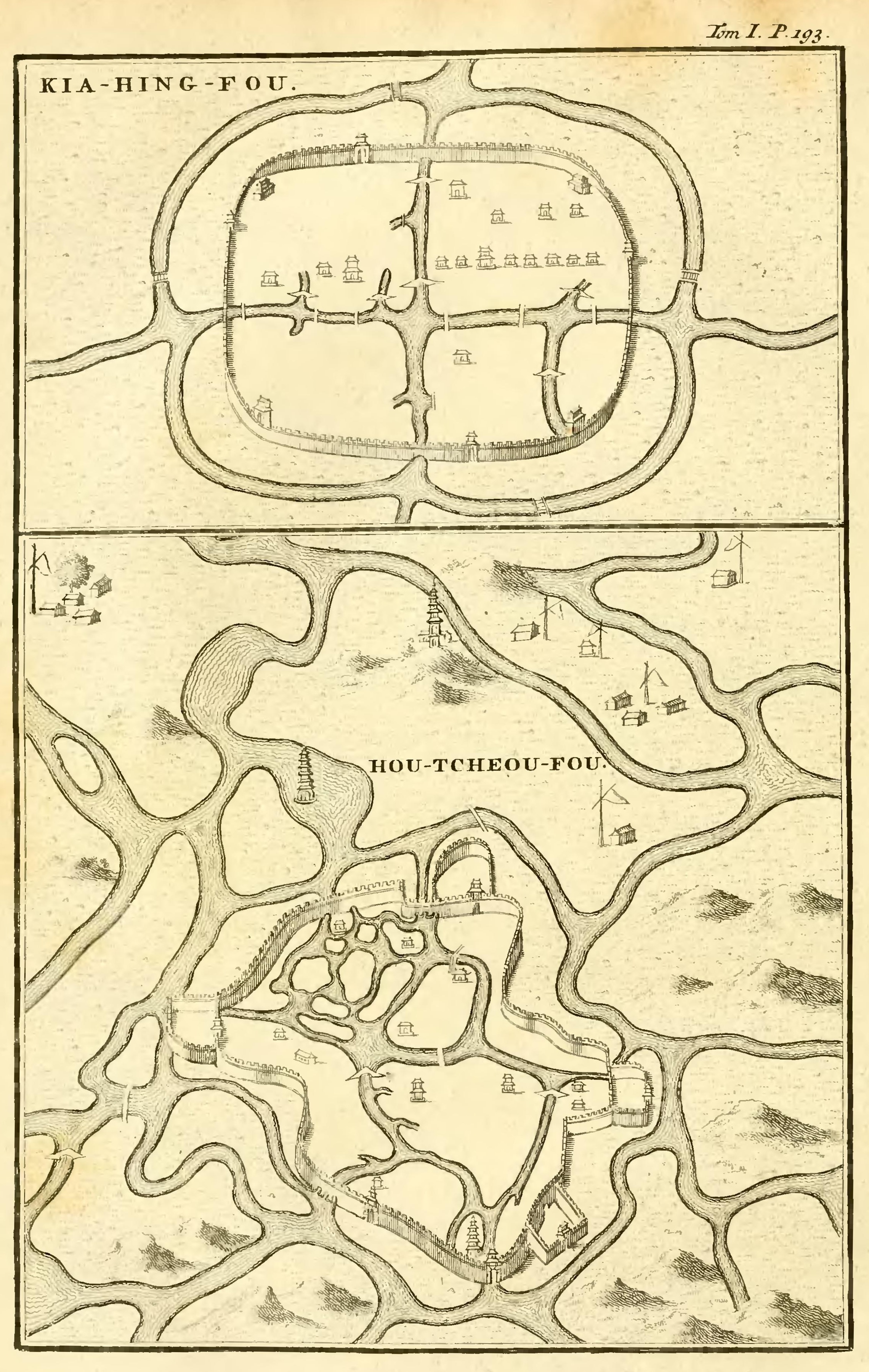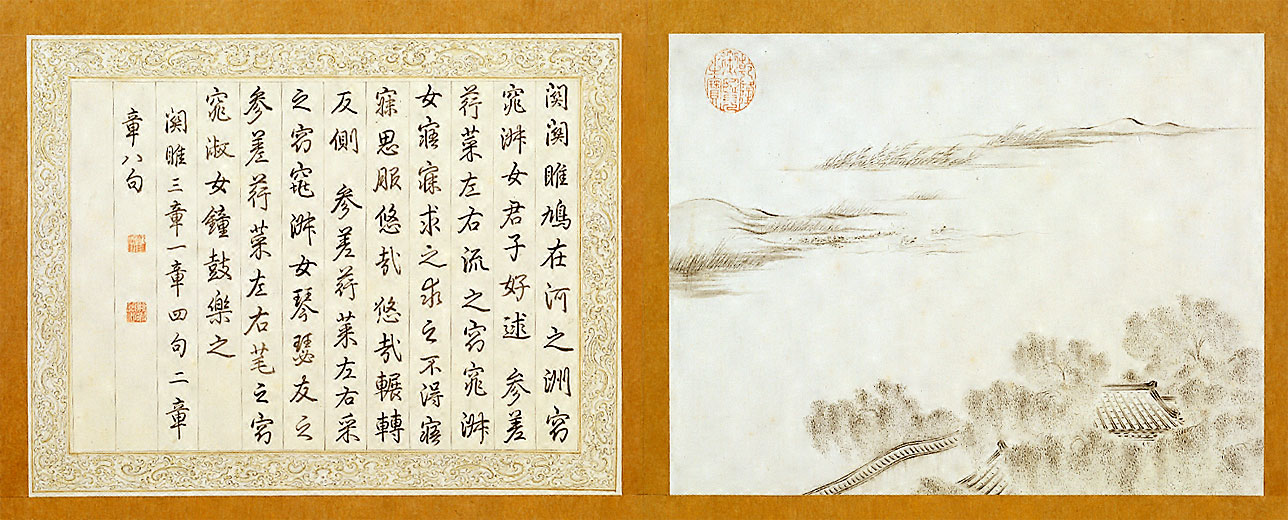|
Jiayetang
Jiayetang () is a library and book publisher in Nanxun District, Huzhou, China. It was established by a local gentry Liu Chenggan (1881-1963) in the 1920s. It was built next to the Lesser Lotus Manor. Previously, the library was also a bookstore. History Jiayetang's founder Liu Chenggan was a bibliophile from a wealthy banker family of Huzhou. Chenggan invested a tremendous amount of money collecting rare publications from different dynasties of China. Jiayetang, at its peak, included parts of the Yongle Encyclopedia and drafts of Siku Quanshu. Among its collections were the Song dynasty version of the Early Four Historiographies (Shiji, Han Shu, Hou Hanshu and Sanguo Zhi). In 1950, after the communist revolution, the library was specifically protected due to its value. Jiayetang's unique documents concerning Sino-Indian borders were later used as strategic resources during the Sino-Indian War of 1962. Currently, Jiayetang possesses over 150,000 woodcut plates originally use ... [...More Info...] [...Related Items...] OR: [Wikipedia] [Google] [Baidu] |
Nanxun District
Nanxun District () is a district in the prefecture-level city of Huzhou, Zhejiang province, China. Nanxun Town, an ancient water town, is located in the district. It is one of the most well-preserved old towns in this region and is known for its cultural heritage. Other towns in the district include Shuanglin, Lianshi, Linghu, Shanlian, Qianjin and Shicong. History It was called Xunxi in the 9th century; Nanxun was established in the 13th century. The town turned into an important distribution center of farm and other products due to convenient transportation by water. Between the 16th to 19th centuries. The area emerged as one of the first entrepreneurial regions in the regions south of the Yangtze River. Production of silkworm and silk reels flourished and the raw silk trade developed. Nanxun became a commodity economy situated between in Jiangsu Jiangsu is a coastal Provinces of the People's Republic of China, province in East China. It is one of the leading provinces ... [...More Info...] [...Related Items...] OR: [Wikipedia] [Google] [Baidu] |
Communist Revolution Of China
The Chinese Civil War was fought between the Kuomintang-led government of the Republic of China and the forces of the Chinese Communist Party (CCP). Armed conflict continued intermittently from 1 August 1927 until Communist victory resulted in their total control over mainland China on 7 December 1949. The war is generally divided into two phases with an interlude: from August 1927 to 1937, the First United Front alliance of the KMT and CCP collapsed during the Northern Expedition, and the Nationalists controlled most of China. From 1937 to 1945, hostilities were mostly put on hold as the Second United Front fought the Japanese invasion of China with eventual help from the Allies of World War II. However, armed clashes between the groups remained common. Exacerbating the divisions within China further was the formation of the Wang Jingwei regime, a Japan-sponsored puppet government led by Wang Jingwei, which was established to nominally govern the regions of China that came ... [...More Info...] [...Related Items...] OR: [Wikipedia] [Google] [Baidu] |
Buildings And Structures In Huzhou
A building or edifice is an enclosed structure with a roof, walls and windows, usually standing permanently in one place, such as a house or factory. Buildings come in a variety of sizes, shapes, and functions, and have been adapted throughout history for numerous factors, from building materials available, to weather conditions, land prices, ground conditions, specific uses, prestige, and aesthetic reasons. To better understand the concept, see ''Nonbuilding structure'' for contrast. Buildings serve several societal needs – occupancy, primarily as shelter from weather, security, living space, privacy, to store belongings, and to comfortably live and work. A building as a shelter represents a physical separation of the human habitat (a place of comfort and safety) from the ''outside'' (a place that may be harsh and harmful at times). buildings have been objects or canvasses of much artistic expression. In recent years, interest in sustainable planning and building practi ... [...More Info...] [...Related Items...] OR: [Wikipedia] [Google] [Baidu] |
Major National Historical And Cultural Sites In Zhejiang
Major most commonly refers to: * Major (rank), a military rank * Academic major, an academic discipline to which an undergraduate student formally commits * People named Major, including given names, surnames, nicknames * Major and minor in music, an interval, chord, scale, or key * Major sport competitions Major(s) or The Major may also refer to: Arts and entertainment Fictional characters * Old Major, a pig in ''Animal Farm'' * Major Major Major Major, in ''Catch-22'' * The Major (''Hellsing'') * Major (Cinderella), a horse in Disney's ''Cinderella'' * Major Gowen or the Major, in ''Fawlty Towers'' * Motoko Kusanagi or the Major, in ''Ghost in the Shell'' Film, television, theatre and print * '' The Major'', a 1963 BBC natural history documentary film * ''The Major'' (film), a 2013 Russian action film * ''Major'' (film), a 2022 Indian biopic * ''Major'' (manga), a sports manga and anime series by Takuya Mitsuda * ''The Major'' (play), an 1881 American musical comed ... [...More Info...] [...Related Items...] OR: [Wikipedia] [Google] [Baidu] |
History Of Huzhou
Huzhou (, ; Huzhou dialect: ''ghou² cieu¹'') is a prefecture-level city in northern Zhejiang province (Hangzhou–Jiaxing–Huzhou Plain, China). Lying south of the Lake Tai, it borders Jiaxing to the east, Hangzhou to the south, and the provinces of Anhui and Jiangsu to the west and north respectively. Huzhou is on the south bank of Taihu Lake, which it is named after. It has a history of more than 2,300 years. It governs Wuxing and Nanxun districts and three counties of Deqing, Changxing and Anji, with a total area of 5,818 square kilometers. As of the 2020 census, its population was 3,367,579 inhabitants, of whom 1,015,937 lived in the built-up (''or metro'') area made of Wuxing District as Nanxun District was not yet being conurbated. Location Huzhou, in its general aspect, is in the center of the Yangtze River Delta Economic Area, with the city center south of the Chinese third largest freshwater lake Lake Tai. The city borders Jiaxing City to the east, Hangzhou City ... [...More Info...] [...Related Items...] OR: [Wikipedia] [Google] [Baidu] |
Libraries In Zhejiang
A library is a collection of books, and possibly other materials and media, that is accessible for use by its members and members of allied institutions. Libraries provide physical (hard copies) or digital (soft copies) materials, and may be a physical location, a virtual space, or both. A library's collection normally includes printed materials which may be borrowed, and usually also includes a reference section of publications which may only be utilized inside the premises. Resources such as commercial releases of films, television programmes, other video recordings, radio, music and audio recordings may be available in many formats. These include DVDs, Blu-rays, CDs, cassettes, or other applicable formats such as microform. They may also provide access to information, music or other content held on bibliographic databases. In addition, some libraries offer creation stations for makers which offer access to a 3D printing station with a 3D scanner. Libraries can vary widely ... [...More Info...] [...Related Items...] OR: [Wikipedia] [Google] [Baidu] |
Classical Chinese
Classical Chinese is the language in which the classics of Chinese literature were written, from . For millennia thereafter, the written Chinese used in these works was imitated and iterated upon by scholars in a form now called Literary Chinese, which was used for almost all formal writing in China until the early 20th century. Each written character corresponds to a single spoken syllable, and almost always to a single independent word. As a result, the characteristic style of the language is comparatively terse. Starting in the 2nd century CE, use of Literary Chinese spread to the countries surrounding China, including Vietnam, Korea, Japan, and the Ryukyu Islands, where it represented the only known form of writing. Literary Chinese was adopted as the language of civil administration in these countries, creating what is known as the Sinosphere. Each additionally developed systems of readings and annotations that enabled non-Chinese speakers to interpret Literary ... [...More Info...] [...Related Items...] OR: [Wikipedia] [Google] [Baidu] |
Zhejiang Province
) , translit_lang1_type2 = , translit_lang1_info2 = ( Hangzhounese) ( Ningbonese) (Wenzhounese) , image_skyline = 玉甑峰全貌 - panoramio.jpg , image_caption = View of the Yandang Mountains , image_map = Zhejiang in China (+all claims hatched).svg , mapsize = 275px , map_caption = Location of Zhejiang in China , coordinates = , subdivision_type = Country , subdivision_name = China , named_for = Old name of Qiantang River , seat_type = Capital and largest city , seat = Hangzhou , established_title = Annexation by the Qin dynasty , established_date = 222 BC , established_title2 = Jiangnandong Circuit , established_date2 = 626 , established_title3 = Liangzhe Circuit , established_date3 = 997 , established_title4 = Zhejiang Province formed , established_date4 = 1368 , established_title5 = Republican Period , established_date5 = 1 January 1912 , established_title6 = ... [...More Info...] [...Related Items...] OR: [Wikipedia] [Google] [Baidu] |
Sino-Indian War
The Sino–Indian War, also known as the China–India War or the Indo–China War, was an armed conflict between China and India that took place from October to November 1962. It was a military escalation of the Sino–Indian border dispute. Fighting occurred along India's border with China, in India's North-East Frontier Agency east of Bhutan, and in Aksai Chin west of Nepal. There had been a series of border skirmishes between the two countries after the 1959 Tibetan uprising, when India granted asylum to the Dalai Lama. Chinese military action grew increasingly aggressive after India rejected proposed Chinese diplomatic settlements throughout 1960–1962, with China resuming previously banned "forward patrols" in Ladakh after 30 April 1962. Amidst the Cuban Missile Crisis, seeing that the U.S. was pre-occupied with dealing with it, China abandoned all attempts towards a peaceful resolution on 20 October 1962,''Webster's Encyclopedic Unabridged Dictionary of the English ... [...More Info...] [...Related Items...] OR: [Wikipedia] [Google] [Baidu] |
Sanguo Zhi
The ''Records of the Three Kingdoms'' is a Chinese official history written by Chen Shou in the late 3rd century CE, covering the end of the Han dynasty (220 CE) and the subsequent Three Kingdoms period (220–280 CE). It is regarded as to be the authoritative source text for these periods. Compiled following the reunification of China under the Jin dynasty (266–420), the work chronicles the political, social, and military events within rival states Cao Wei, Shu Han and Eastern Wu into a single text organized by individual biography. The ''Records'' are the primary source of information for the 14th-century historical novel ''Romance of the Three Kingdoms'', considered to be one of the four classic novels emblematic of written vernacular Chinese. While large subsections of the work have been selected and translated into English, the entire corpus has yet to receive an unabridged English translation. Origin and structure The ''Book of Han'' and ''Records of the ... [...More Info...] [...Related Items...] OR: [Wikipedia] [Google] [Baidu] |
Huzhou
Huzhou (, ; Huzhou dialect: Romanization of Wu Chinese, ''ghou² cieu¹'') is a prefecture-level city in northern Zhejiang province (Hangzhou–Jiaxing–Huzhou Plain, China). Lying south of the Lake Tai, it borders Jiaxing to the east, Hangzhou to the south, and the provinces of Anhui and Jiangsu to the west and north respectively. Huzhou is on the south bank of Taihu Lake, which it is named after. It has a history of more than 2,300 years. It governs Wuxing and Nanxun districts and three counties of Deqing, Changxing and Anji, with a total area of 5,818 square kilometers. As of the 2020 census, its population was 3,367,579 inhabitants, of whom 1,015,937 lived in the built-up (''or metro'') area made of Wuxing District as Nanxun District was not yet being conurbated. Location Huzhou, in its general aspect, is in the center of the Yangtze Delta, Yangtze River Delta Economic Area, with the city center south of the Chinese third largest freshwater lake Lake Tai. The city borde ... [...More Info...] [...Related Items...] OR: [Wikipedia] [Google] [Baidu] |
Hou Hanshu
The ''Book of the Later Han'', also known as the ''History of the Later Han'' and by its Chinese name ''Hou Hanshu'' (), is one of the Twenty-Four Histories and covers the history of the Han dynasty from 6 to 189 CE, a period known as the Later or Eastern Han. The book was compiled by Fan Ye and others in the 5th century during the Liu Song dynasty, using a number of earlier histories and documents as sources. Background In 23 CE, Han dynasty official Wang Mang was overthrown by a peasants' revolt known as the Red Eyebrows. His fall separates the Early (or Western) Han dynasty from the Later (or Eastern) Han dynasty. As an orthodox history, the book is unusual in being completed over two hundred years after the fall of the dynasty. Fan Ye's primary source was the '' Dongguan Hanji'' (東觀漢記; "Han Records of the Eastern Lodge"), which was written during the Han dynasty itself. Contents References Citations Sources ; General * Chavannes, Édouard (1906). ... [...More Info...] [...Related Items...] OR: [Wikipedia] [Google] [Baidu] |







